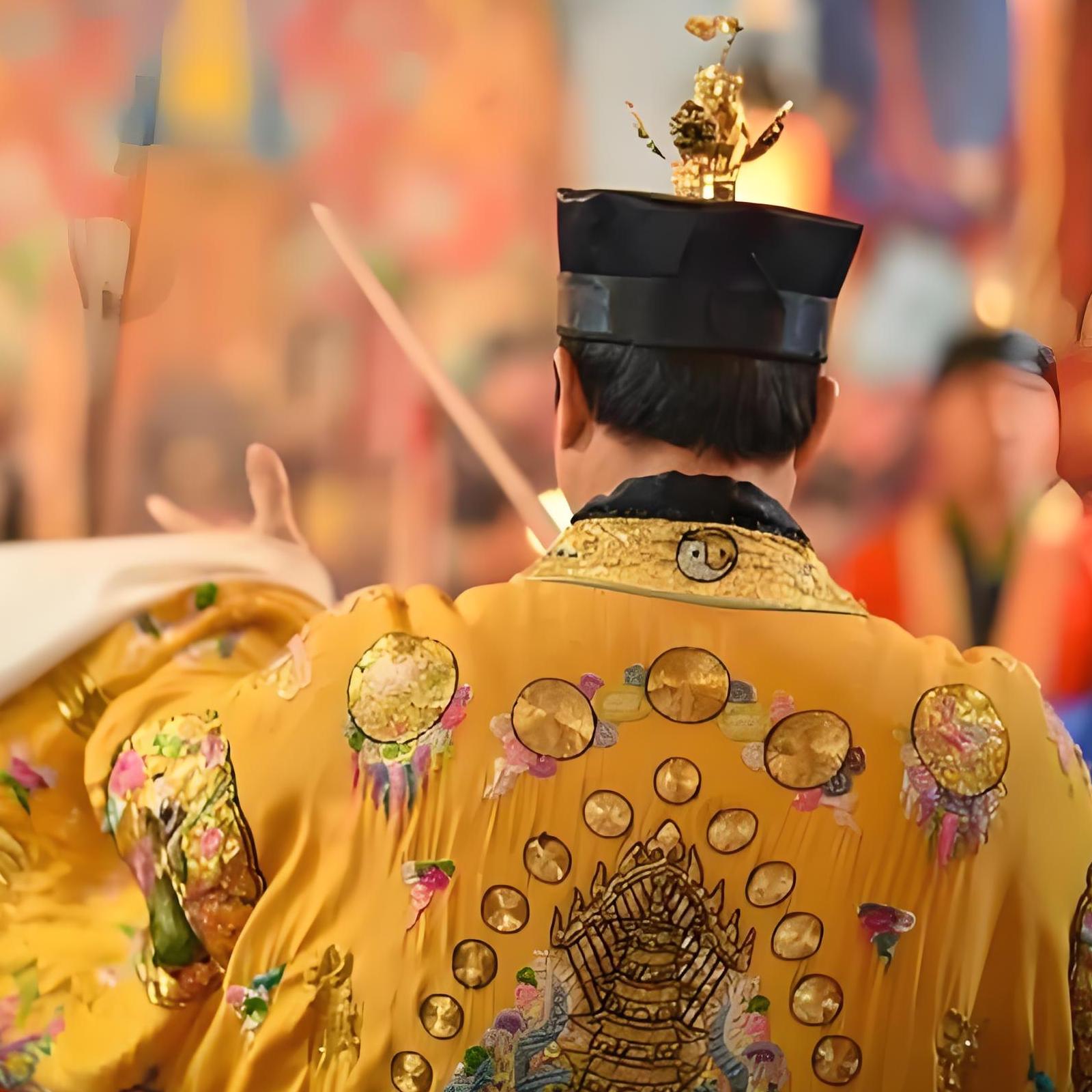The Story of the General and Feng Shui
It is said that during the Yuan Dynasty, there was a mighty general named Zhang Rou. Renowned for his bravery and invincibility, he was greatly admired by the people. After his death, the emperor, wishing to honor him, decided to choose an excellent burial site for him in a location where he had fought many battles. To find this auspicious site, the emperor dispatched geomancers to search for the perfect feng shui location.
The geomancers arrived in the area around Zhongshan (present-day Mancheng County, Hebei). Standing on the highest point north of the city, they observed the terrain: to the west lay the rolling hills of Ling Mountain, to the east stretched an endless plain, and to the north, a chain of mountains ended in a place enveloped in mist and purple clouds, creating a scene resembling "nine dragons playing with water." About ten li to the north and slightly to the west, they found a small village nestled against nine mountains to the north and facing the Cao River to the south. The village was surrounded by mountains, yet the landscape was open and expansive. The entire terrain resembled a reclining turtle, with the energy of nine dragons descending from the mountains. The geomancers declared, "This is indeed a perfect and wonderful site." They returned to the capital and reported to the emperor. Upon hearing their description of the site, the emperor was delighted and immediately ordered the area to be marked for construction. He conscripted nearby villagers to clear the land, dig earth, and build roads.
The news of the construction reached the nearby villagers, and they became worried. They feared that the secrecy required for the general's tomb might mean that those who helped build it would be buried alive to keep the site hidden. As the villagers pondered their fate, they heard chanting from a secluded mountain area to the west of the village, known as Moonlight Temple. Upon investigation, they found an old monk named Mingyue. The monk calculated and contemplated for a moment before telling the villagers that there was a way to avoid this disaster, but they needed to work together with one heart. He whispered his plan to them, and they agreed to follow it.
After some time, the tomb was finally completed. The last task was to create statues of stone men and horses from marble, along with a stele carried by a stone tortoise. The stele was to be inscribed with the general’s deeds and the court's commendations. This was the hardest and most dangerous part of the job, as the massive stones, weighing several tons, could easily crush people if not handled properly. According to tradition, many villagers would be buried alive to accompany the tomb. However, whenever the villagers were bound and placed into the large pit meant for the stele, the stele would mysteriously topple over. When the villagers were removed from the pit, the stele would stand firm.
This strange phenomenon reached the emperor’s ears. Believing that Zhang Rou’s spirit was intervening to prevent the villagers from losing their lives after laboring on his tomb, the emperor ordered an investigation. Convinced by the findings, the emperor decided to spare the villagers. The construction of the tomb was thus completed without the need for any sacrifices, resulting in a fortunate outcome for both the villagers and the tomb builders.




